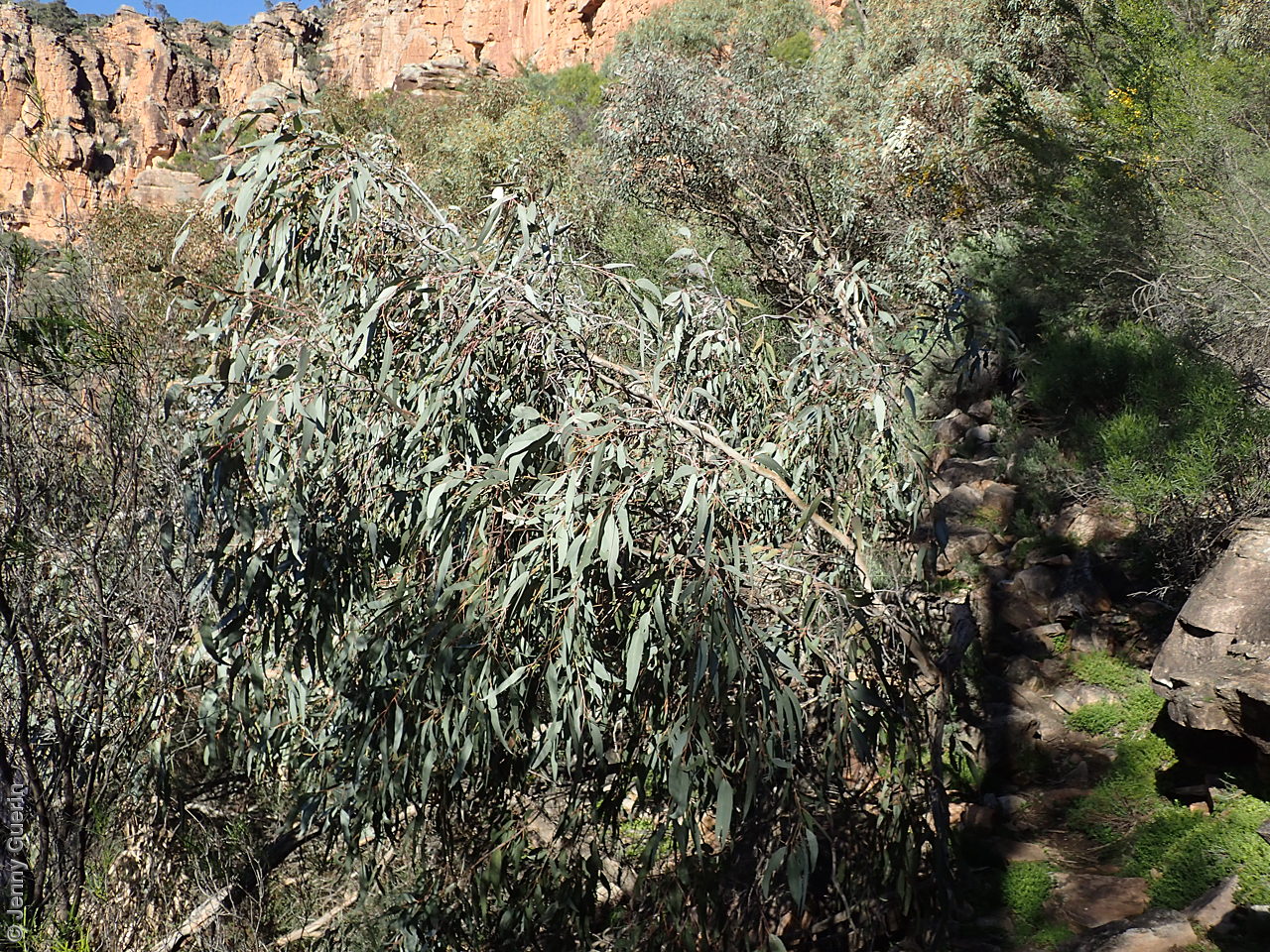

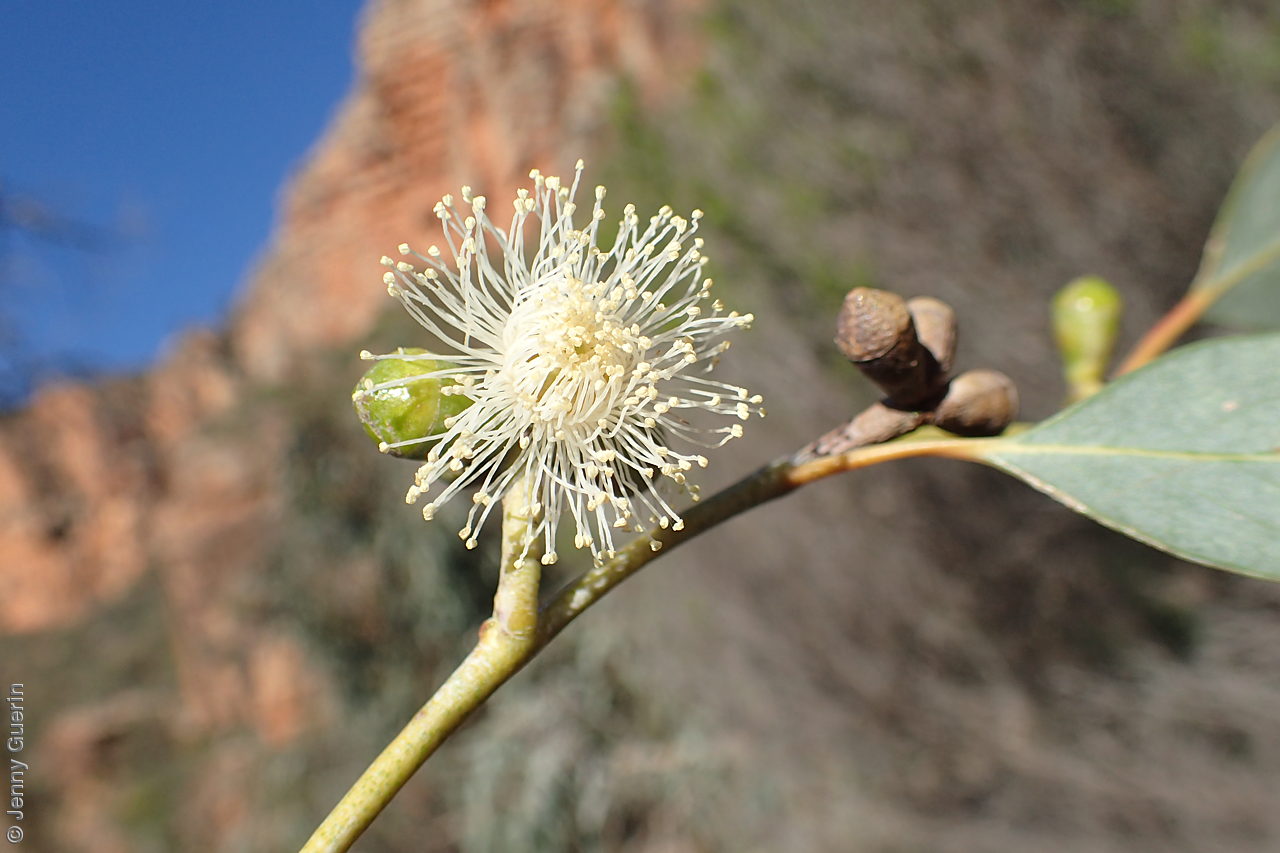
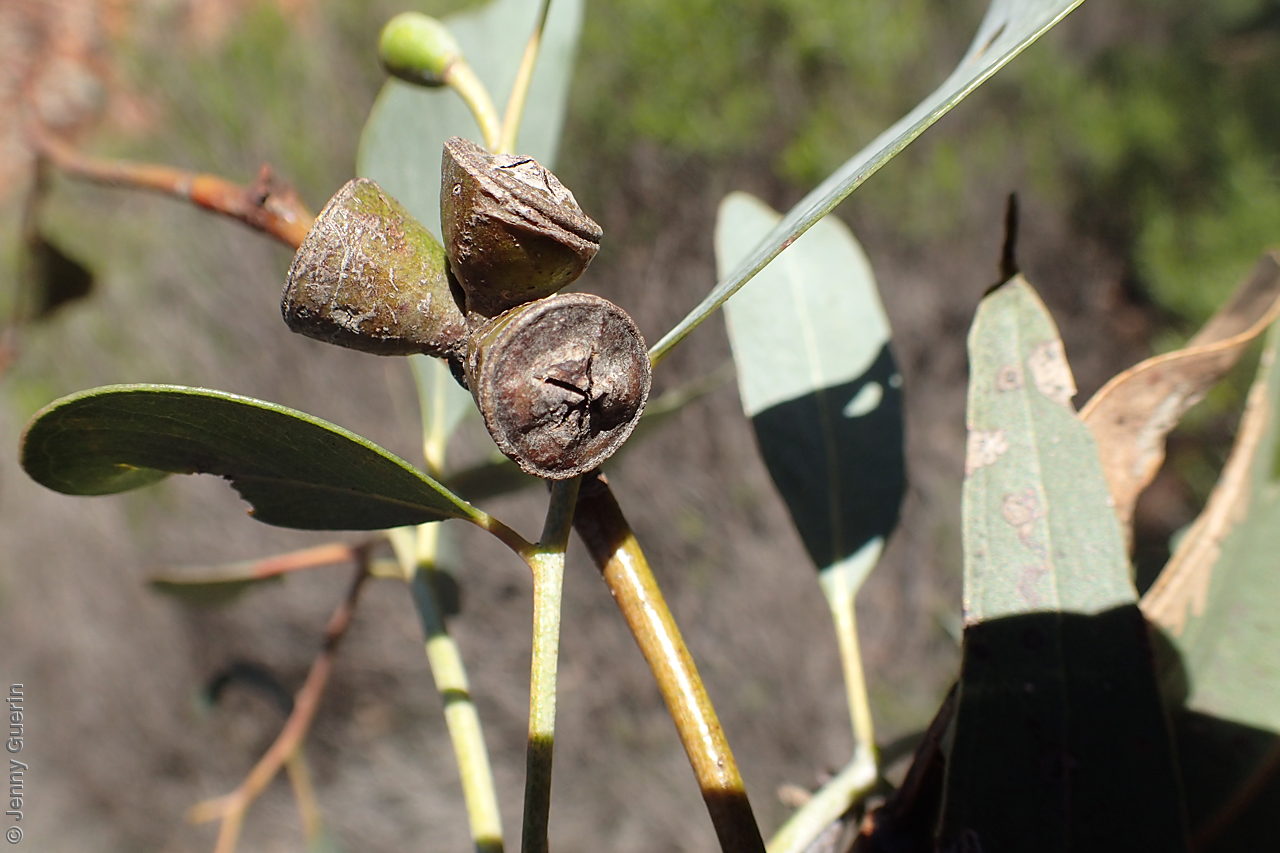
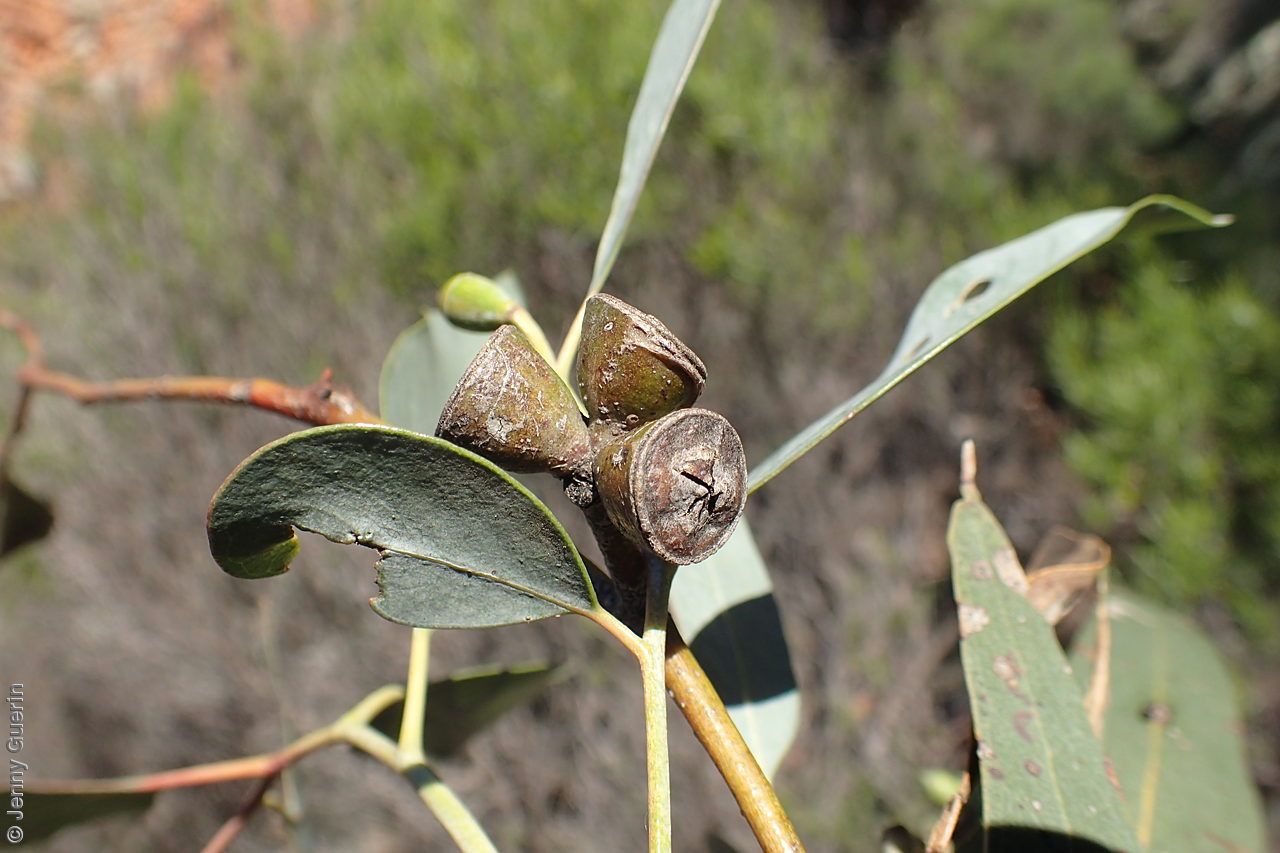
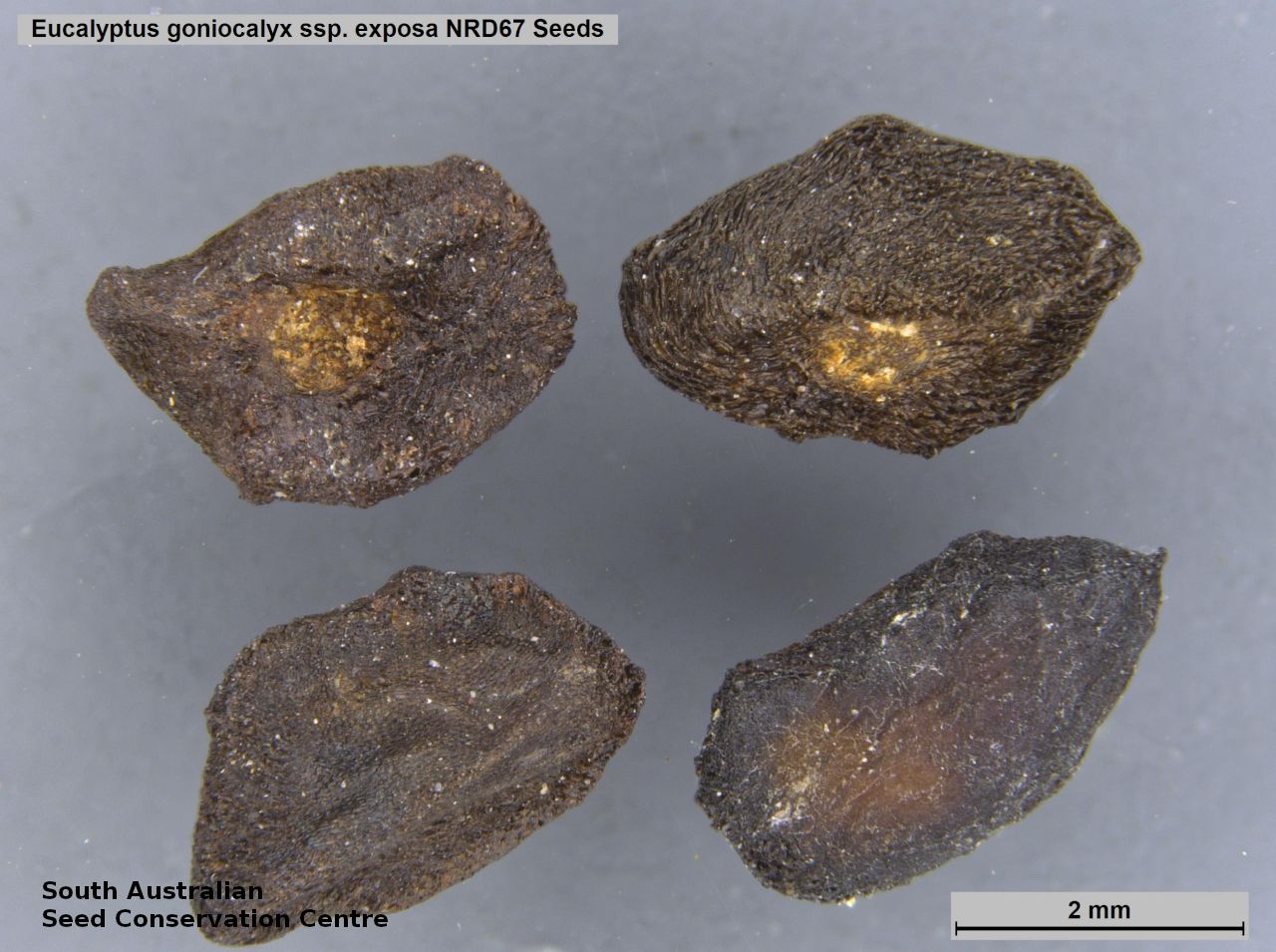


Botanical art
Prior names
Eucalyptus goniocalyx, partly
Common names
Long-leaf Box
Bastard Box
Etymology
Eucalyptus from the Greek 'eu' meaning well and 'calyptos' meaning covered; alluding to the cap or lid which covers the stamens in the bud. Goniocalyx from the Greek 'gonia' meaning angle and 'calyx'; referring to the buds and fruits with slightly angled sides. Exposa from the English 'exposed', referring to the exposed habitat of the subspecies on high altitude ridges, and to the fact that until its description, the subspecies had been poorly collected by botanists.
Distribution and status
Endemic to South Australia and restricted to the northern Flinders Ranges, growing on the upper slopes of the Elder Ranges and Wilpena Pound Ranges above 900 m altitude. Native. Very rare in South Australia.
Herbarium region: Flinders Ranges
NRM region: South Australian Arid Lands
AVH map: SA distribution map (external link)
Plant description
Several-stemmed tree or mallee to 6 m high with viable bark depending on the size of the plant, smooth on smaller mallee to some rough. thin, dark grey to grey on larger mallee. Juvenile leaves round, greyish and very waxy. Adult leaves to 170 mm long and 20 mm wide, lanceolate to falcate, dull to slightly glossy, blue-green. Flowers in groups of 7 in leaf axils. Buds to 11 mm long and 7 mm wide, slightly angular near base, waxy, bud-cap cone-shaped, equal in length to the base. Flower white. This subspecies is distinguished from Eucalyptus goniocalyx ssp. goniocalyx which has a larger tree habit, more extensive rough bark, larger juvenile and adult leaves and non-waxy branchlets, buds and fruits. Fruits are cup-shaped to cylinder-shaped fruit to 10 mm long and 10 mm wide, lacking individual stalk, waxy, valves 3 or 4 same level to slightly above rim. Seeds are dark brown to black ovoid seed to 4 mm long and 2 mm wide, with fined wrinkles. Seed embryo type is folded.
Seed collection and propagation
Collect seeds between January and December. Collect mature fruits that are dark and hard (difficult to break with a finger nail), with the valves un-open any time of year. Leave the fruits in a breathable container in a dry room for one to two weeks. This allows the valves on the fruit to open and release the seeds. Separate the seeds by placing all the materials into a bucket and shaking it to dislodge the seeds. Pass the material through a sieve to separate the unwanted material. The finer material will contain both seeds (soft) and frass (hard) usually distinguishable from each other but can be very similar in shape and colour. With finer sieves, the seeds can be separated from the frass but this is not essential for storage or propagation. Store the seeds with a desiccant such as dried silica beads or dry rice, in an air tight container in a cool and dry place. Seeds are non-dormant, viable seed should germinate readily.
| Location | No. of seeds (weight grams) | Number of plants | Date collected | Collection number Collection location | Date stored | % Viability | Storage temperature |
|---|---|---|---|---|---|---|---|
| BGA | 2,500 (2.94 g) | 8 | 22-Aug-2014 | NRD67 Flinders Ranges | 1-Jan-2016 | 100% | -18°C |
Number of plants: This is the number of plants from which the seeds were collected.
Collection location: The Herbarium of South Australia's region name.
% Viability: Percentage of filled healthy seeds determined by a cut test or x-ray.